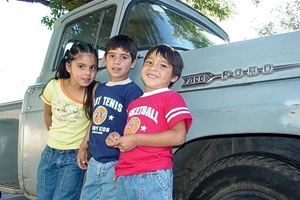While many countries in the so-called Southern Cone of Latin America have made significant progress in the area of child health, others have not – and even in the most advanced countries, progress remains uneven, with wide disparities within countries. The Argentine Paediatrics Society congress, held last month, heard that Brazil, Chile, Paraguay and Uruguay have all made significant progress towards the achievement of MDG4 – to reduce the under-five mortality rate by two thirds between 1990 and 2015 – but in Bolivia and Paraguay, where poverty rates are still high, child health indicators remain poor.  Infant mortality in Bolivia is 50 per 1,000 live births; only 50 per cent of children are up to date on their vaccinations, and 5 per cent of children under two have never been immunized. In Paraguay, meanwhile, where 35 per cent of the country’s 6.5 million people are poor and 19 per cent live in extreme poverty, infant mortality stands at 24 per 1,000 live births, and malnutrition affects 14 per cent of children. Other countries report success with some qualifications. In Brazil, infant mortality has plunged from 80 per 1,000 live births in 1983 to 19 per 1,000 today. Argentina’s infant mortality rate is 12.1 per 1,000 live births, but that average conceals huge disparities. For example, in the north-east province of Formosa, the rate is 20.5 per 1,000, while it is only 8.5 per 1,000 in the city of Buenos Aires. In Uruguay, where infant mortality is the lowest in the region at 7.7 per 1,000 live births, one of the main problems is the heavy concentration of paediatricians in Montevideo, while there is a shortage in the rest of the country.
Infant mortality in Bolivia is 50 per 1,000 live births; only 50 per cent of children are up to date on their vaccinations, and 5 per cent of children under two have never been immunized. In Paraguay, meanwhile, where 35 per cent of the country’s 6.5 million people are poor and 19 per cent live in extreme poverty, infant mortality stands at 24 per 1,000 live births, and malnutrition affects 14 per cent of children. Other countries report success with some qualifications. In Brazil, infant mortality has plunged from 80 per 1,000 live births in 1983 to 19 per 1,000 today. Argentina’s infant mortality rate is 12.1 per 1,000 live births, but that average conceals huge disparities. For example, in the north-east province of Formosa, the rate is 20.5 per 1,000, while it is only 8.5 per 1,000 in the city of Buenos Aires. In Uruguay, where infant mortality is the lowest in the region at 7.7 per 1,000 live births, one of the main problems is the heavy concentration of paediatricians in Montevideo, while there is a shortage in the rest of the country.
Source
IPS News, 17 September 2011
Subscribe now from only £45 a year!
This article is only available for our subscribers
Existing users can login here




